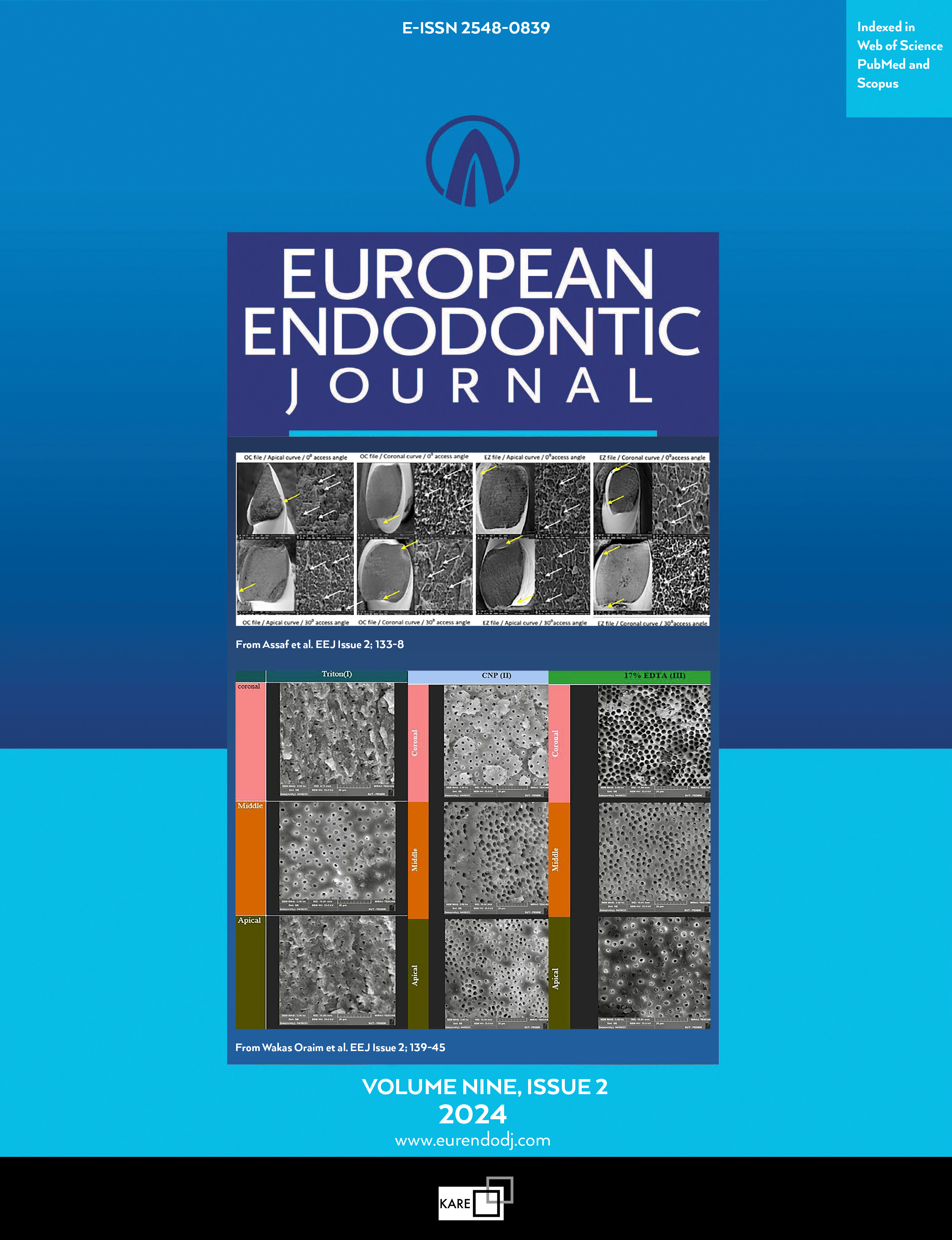Metrics
2022 IMPACT FACTOR
5 year Impact Factor
Eigenfactor
2022 CiteScore
Journal Citation Reports (Clarivate, 2023)(Dentistry, Oral Surgery & Medicine (Science))
Influence of the Calcium Hydroxide Intracanal Dressing on Dentinal Tubule Penetration of Two Root Canal Sealers
Alessandra Timponi Goes Cruz1, Fabiana Soares Grecca2, Lucila Piasecki3, Caroline Wichnieski1, Vânia Portela Dietzel Westphalen1, Everdan Carneiro1, Luiz Fernando Fariniuk1, Ulisses Xavier Da Silva Neto11Department of Endodontics, Pontifical Catholic University of Paraná, Curitiba, Brazil2Department of Endodontics, Federal University of Rio Grande do Sul, Porto Alegre, Rio Grande do Sul, Brazil
3Department of Periodontics and Endodontics, University of Buffalo, New York, USA
Objective: The aim of this study was to evaluate the effect of a calcium hydroxide (CH) dressing on the tu- bular penetration of two endodontic sealers, AH Plus (Dentsply Maillefer, Ballaigues, Switzerland) and MTA Fillapex (Angelus, Londrina, Brazil).
Methods: Seventy-two mandibular premolars with a single root canal were prepared with ProFile.04 rotary instruments (Dentsply Maillefer) and divided into four groups. In two groups, an intracanal CH dressing was placed for 15 days. The obturations were performed with lateral condensation of gutta-percha in combina- tion with one of the tested sealers. The roots were transversely sectioned at the apical and middle levels. The percentage of sealer penetration in the root canal walls and the percentage of impregnated dentin area in the transverse sections were obtained using confocal laser scanning microscopy. Statistical analysis was performed using one-way analysis of variance (ANOVA) and Games-Howell test.
Results: The CH dressing reduced the mean value of tubular penetration in the middle third of teeth obturat- ed with AH Plus (P<0.01), whereas no difference was observed at the apical sections for both sealers. Conclusion: The CH dressing did not interfere with the apical penetration of both tested sealers, however, decreased the tubular penetration in the middle third of the AH Plus root canal fillings. Overall, MTA Fillapex presented higher tubular penetration than AH Plus obturations.
Corresponding Author: Alessandra Timponi Goes Cruz, Brazil
Manuscript Language: English
(1862 downloaded)


